Our full size Black Arrow Space Rocket..
To celebrate the Isle of Wight’s history in building Britain’s biggest space rocket “the Black Arrow” during the 1960’s, the Wight Aviation Museum have created a full sized replica of the rocket, for display at the museum site.
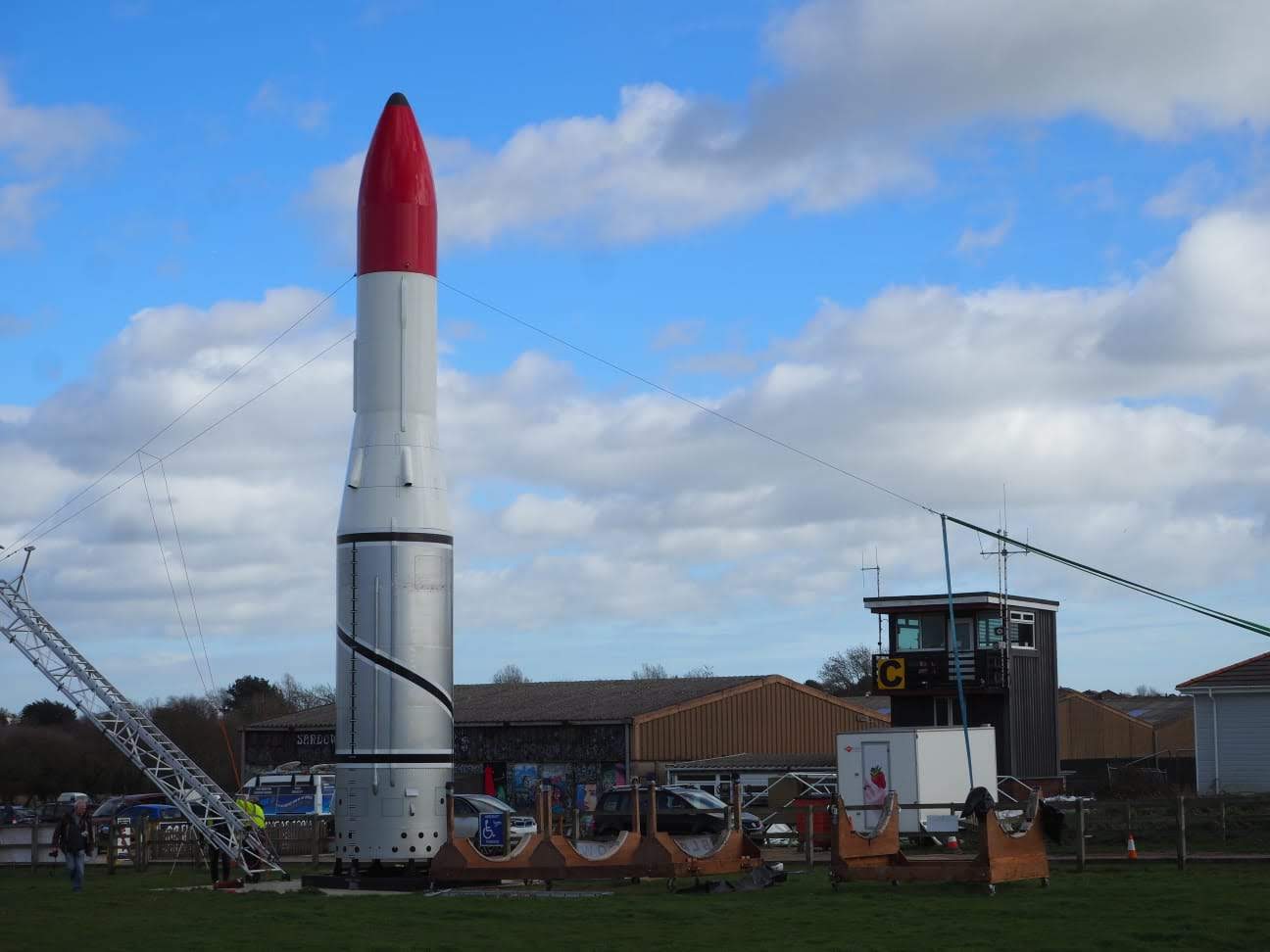
The project has been a team effort led by Wight Aviation Museums volunteer Tony Smart and project creator Rich Curtis working in partnership with Isle of Wight based sponsor IFPL as well as local fabricators and volunteers, full details on the project below.
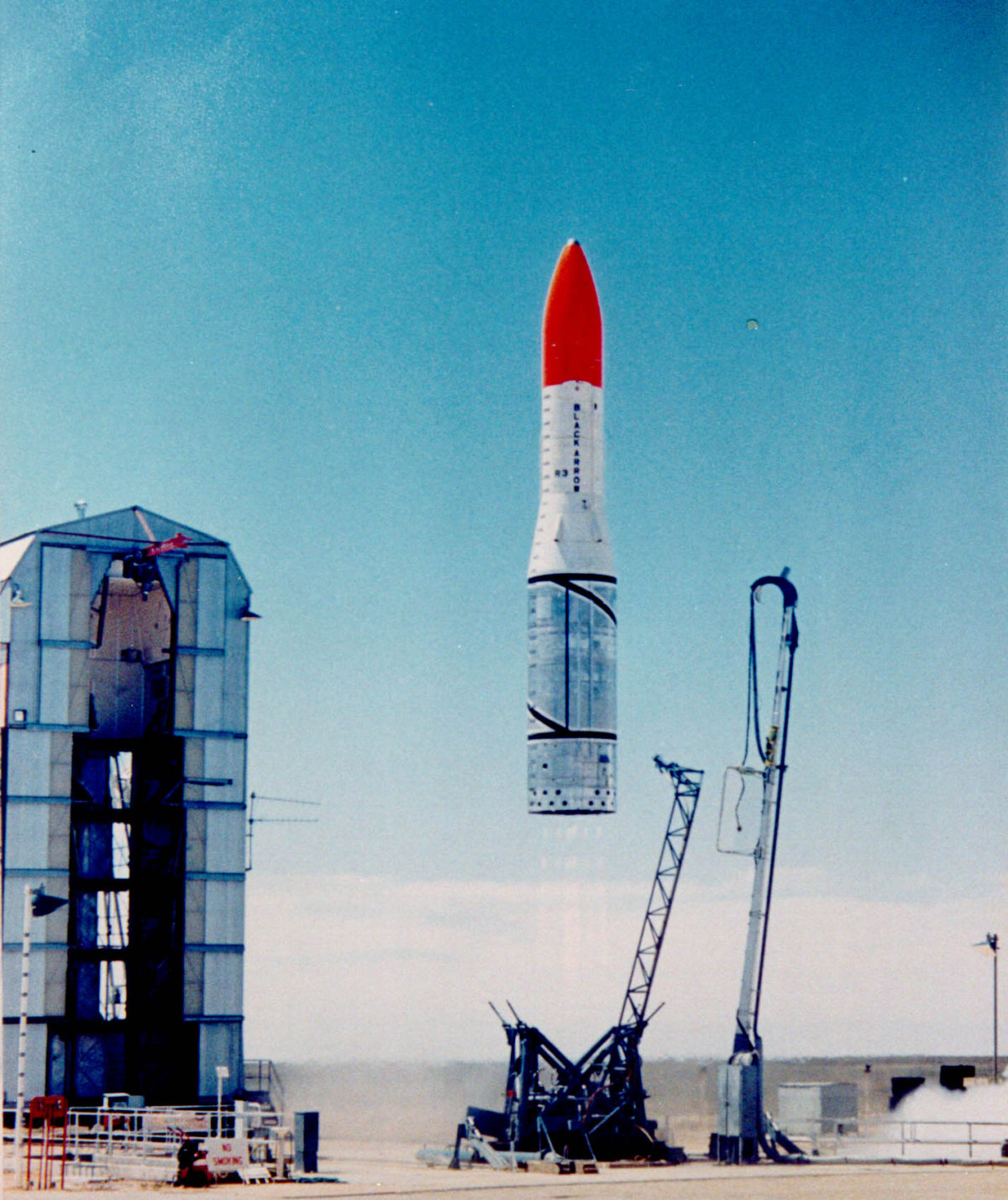
How the project started..
The project was devised by Island based designer and space technology fan Rich Curtis who wanted to celebrate the Isle of Wights history in building space rockets, by creating a full size replica of the Black Arrow for public display.
The aim being to give the public a real sense of the size of these impressive machines and to show what was achieved by Island workers in the past.
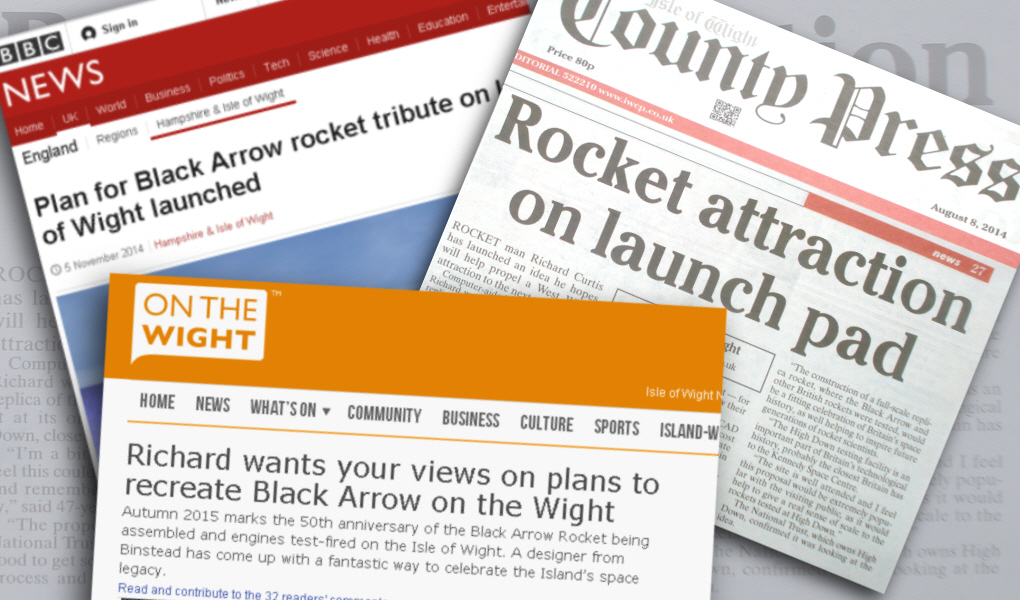
In 2017 Rich joined the newly formed Wight Aviation Museum as this proved a great opportunity to tell the story of the Black Arrow, as part of the wider history of aviation on the Island.
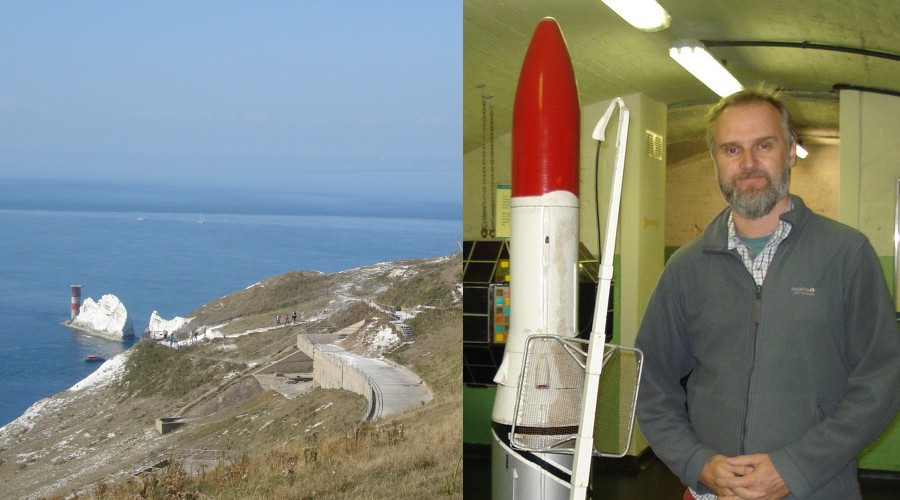
Island based electronics company In Flight Peripherals Ltd, kindly agreed to sponsor the project. IFPL’s CEO Geoff Underwood was keen to support the project as his late father, John Underwood, was a senior engineer on rocket program. Geoff also recognised that it would be great way to inspire the next generation in key areas such as; science, technology and engineering.
Building the Black Arrow replica..
If anyone can, Tony can..
The construction of the replica has been expertly project managed by museum trustee and retired aeronautical engineer Tony Smart, who was able to bring his many years of experience in aircraft engineering to the project.
Tony Worked with a range of companies and organisations on the Island, as well as museum volunteers, to successfully create the replica rocket.
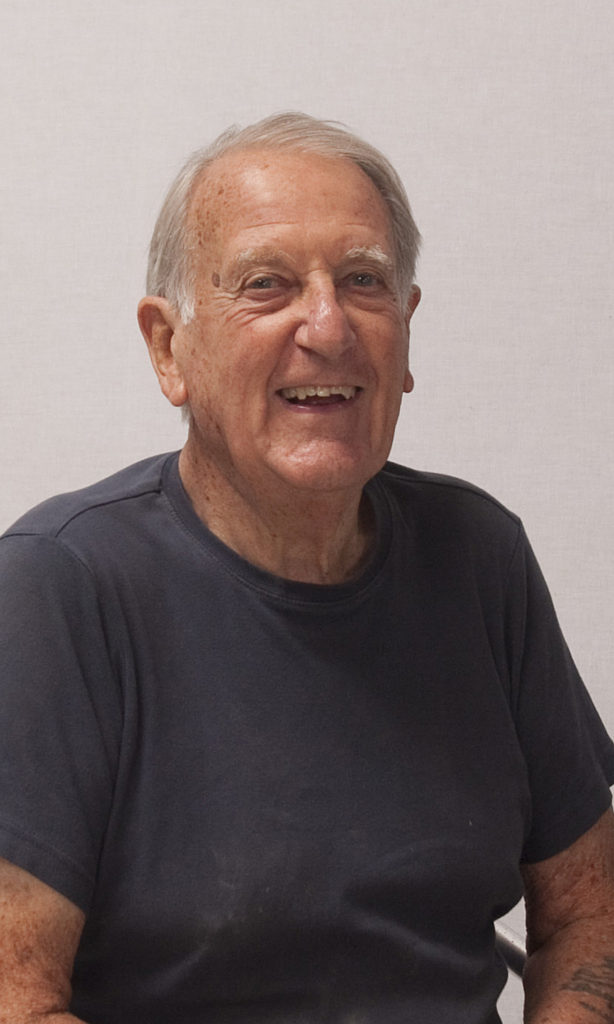
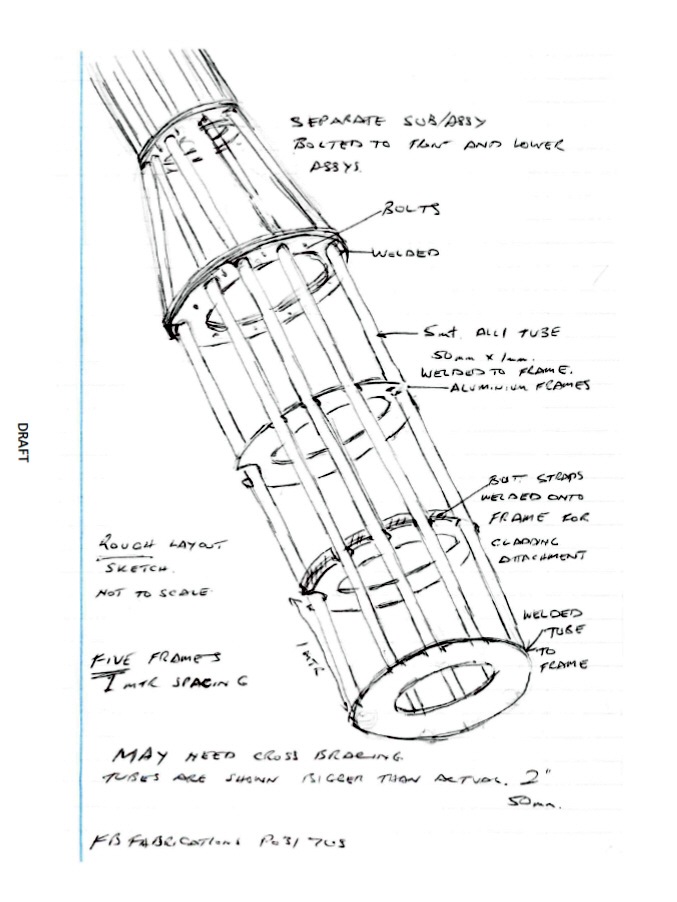
Tony’s initial draft design shows how the frame of the structure could be built using a series of circular profiles welded to vertical supports following the principles of aircraft design, to form a very strong core structure.
This frame then be clad in a sheet material to complete the look of the rocket tanks.
Building the main rocket structure..
Aluminium Marine Consultants Ltd
Tony worked with East Cowes based Aluminium Marine Consultants Ltd, who specialise in the design and build of marine vessels to fabricate the main structure of the replica.
Using their expertise in Aluminium they created the main frame using laser cut sections of Aluminum sheet, that were then welded together. This frame was then clad in Aluminium sheet to make an extremely strong light-weight structure.
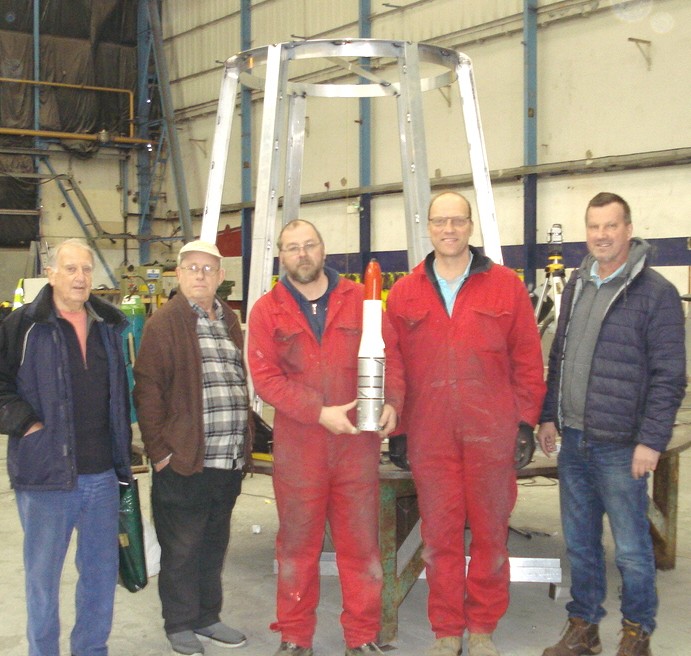
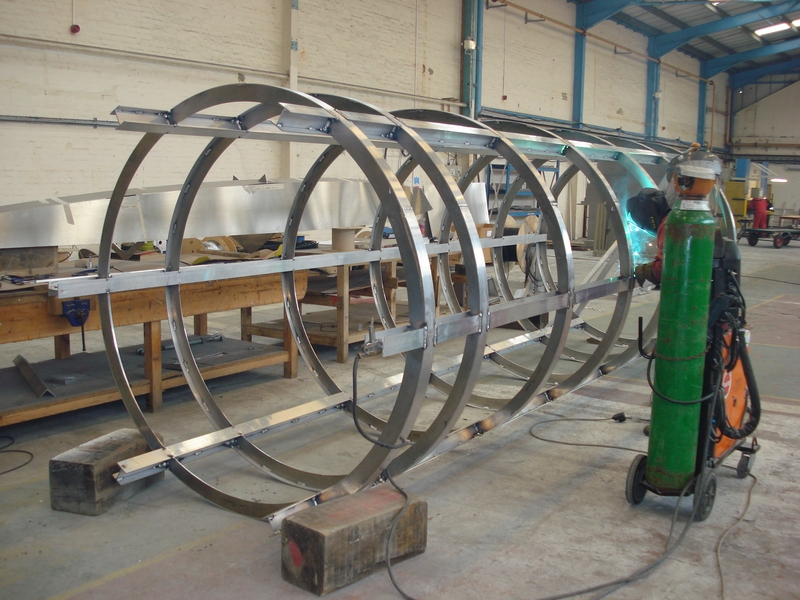
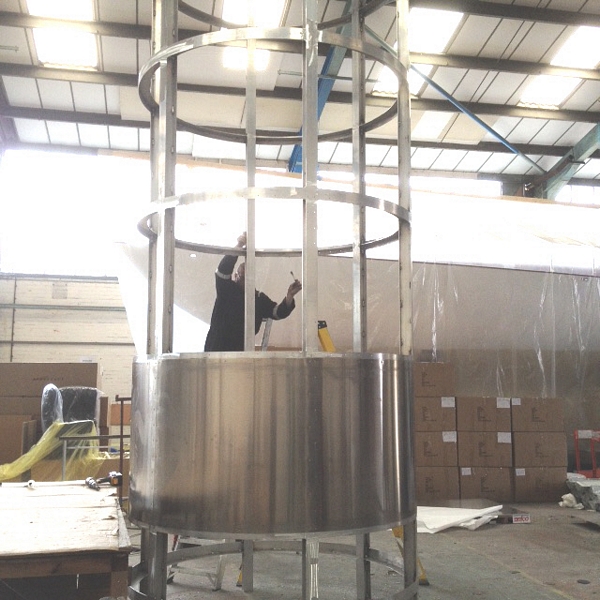
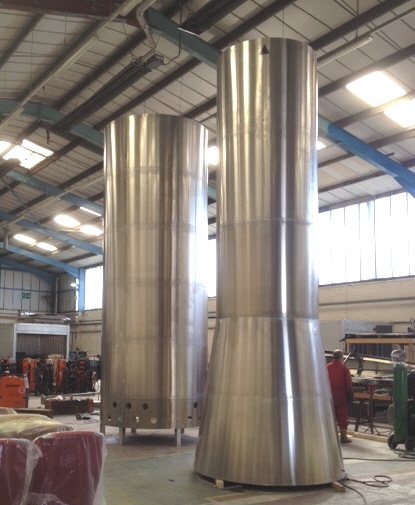
Transporting the Black Arrow
Rob Kingswell Haulage
Once the main structure of the rocket was fabricated and painted it was then transported to the museums custom built workshop to have details and livery applied by Tony and his team of volunteers.
The team at Rob Kingswell Haulage did an excellent job of loading and transporting the rocket sections to our workshop at Sandown Airport.
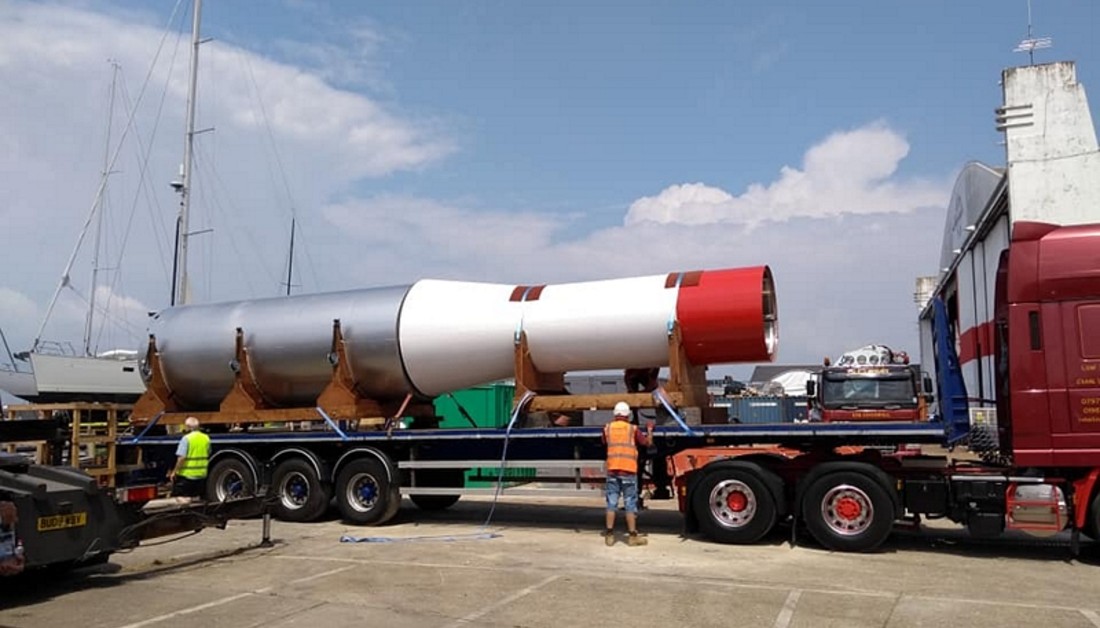
Making the Nose Cone..
Vestas Technology UK Ltd
A team from Vestas Technology UK Ltd very kindly volunteered their time and materials to make the distinctive red nose cone section, using their skills in glass fibre manufacturing.
Vestas Technology UK Ltd carry out research and development into Wind Turbine Blades at their facility on the Isle of Wight.
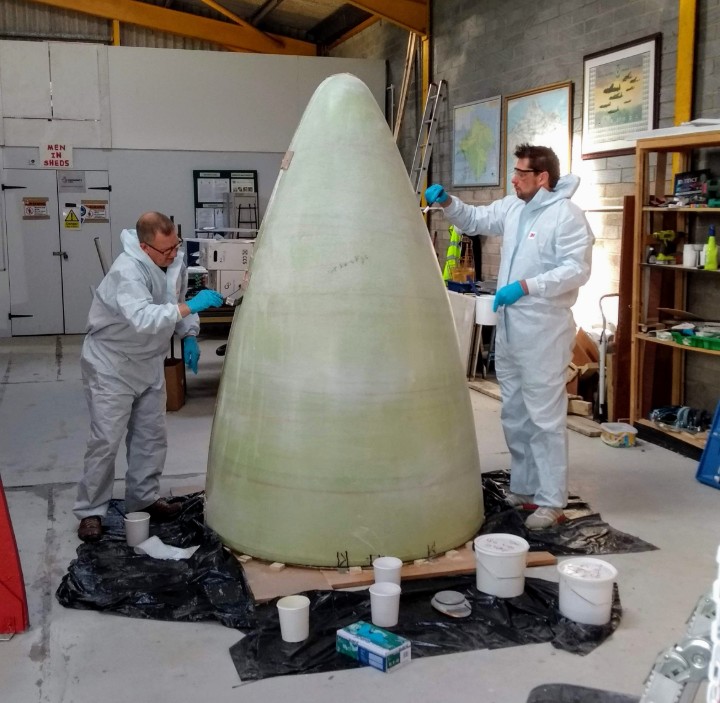
Making the nose cone involved a multi stage process of first constructing a wooden version of one half of the nose cone, a female mold was then taken off this and finally the two nose cone sections were made by laying glass fiber and resin into the female mold.
The two halves were then these were joined together to form the final nose cone structure.

The Siskin Rocket Fairings..
CECAMM College
Based on a wooden model made by Tony, Mark Jenkins who is head of composites at CECAMM college, was able to manufacture replicas of the Siskan separation rocket fairings from fiberglass.
These small rockets allowed the upper stages of the rocket to separate from the first stage.
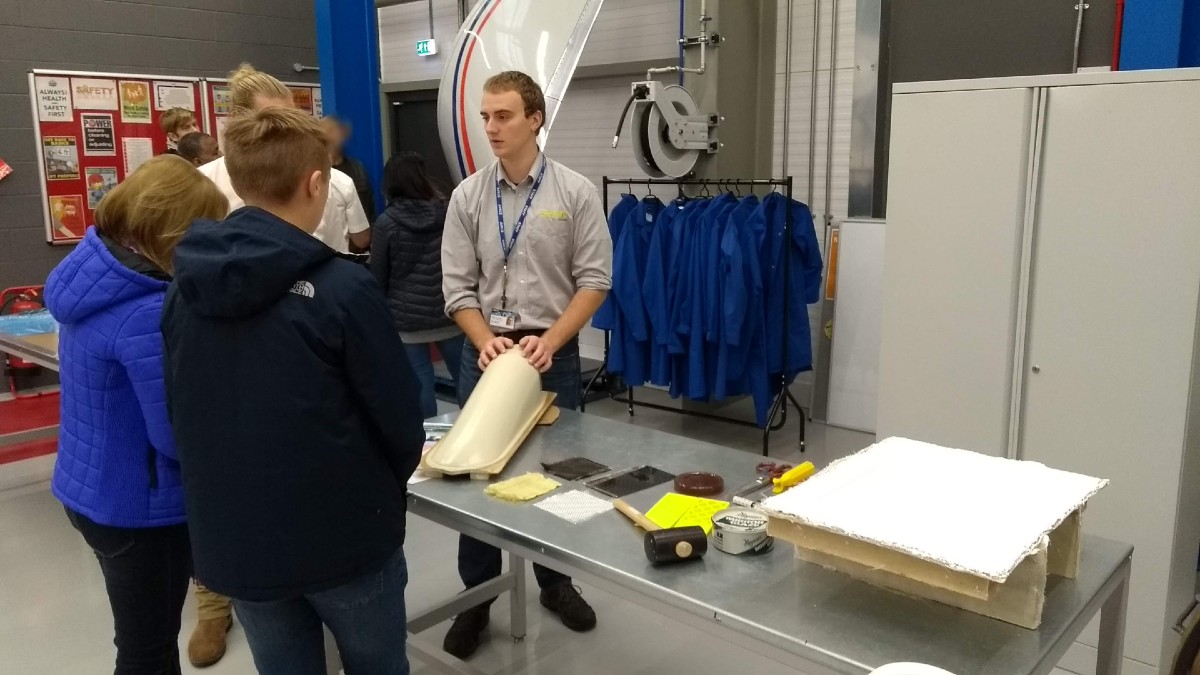
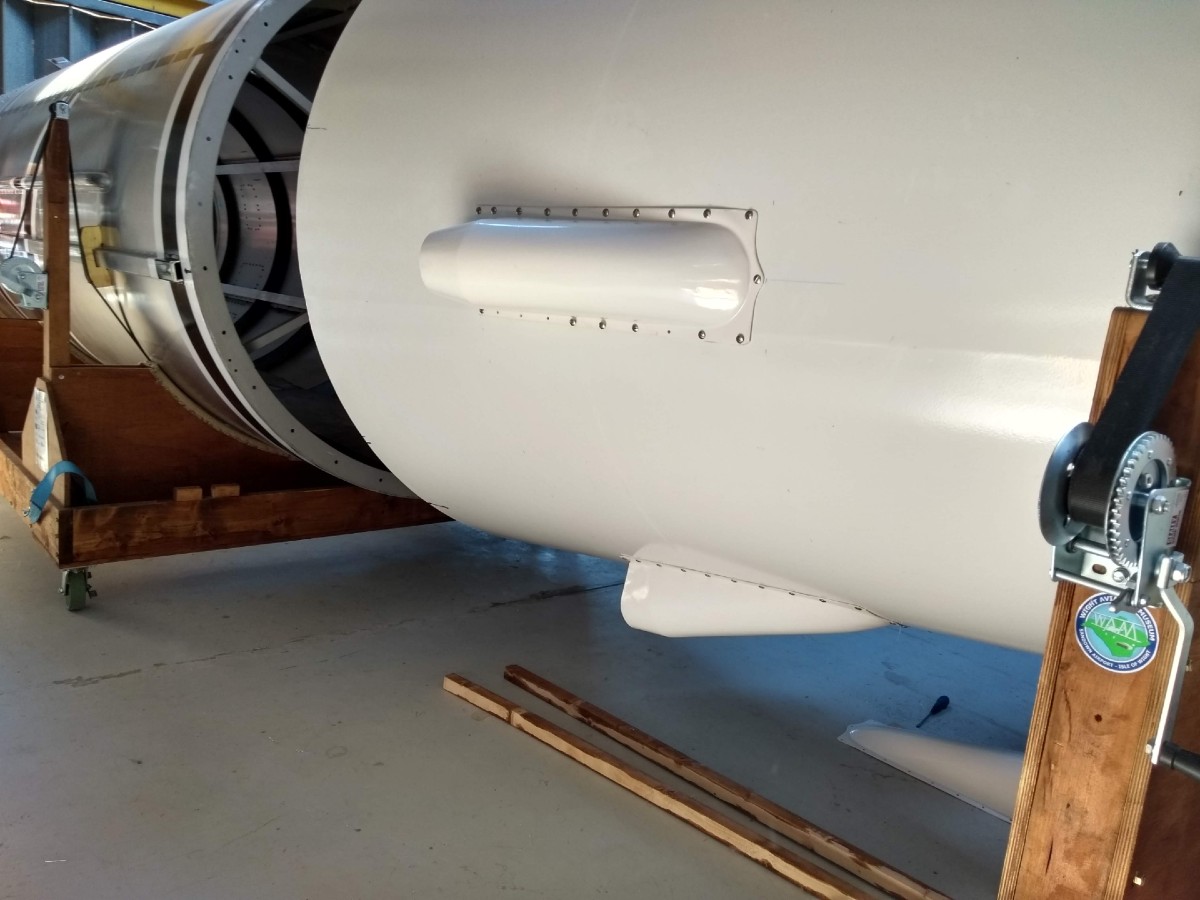
Adding the details at the museum..
With assistance from volunteers Rik and Paul, Tony used his skills in carpentry to design and build a set of cradles which both supported the replica during transportation but also allowed the sections to be rotated, so that the details and livery could be applied to the replica.
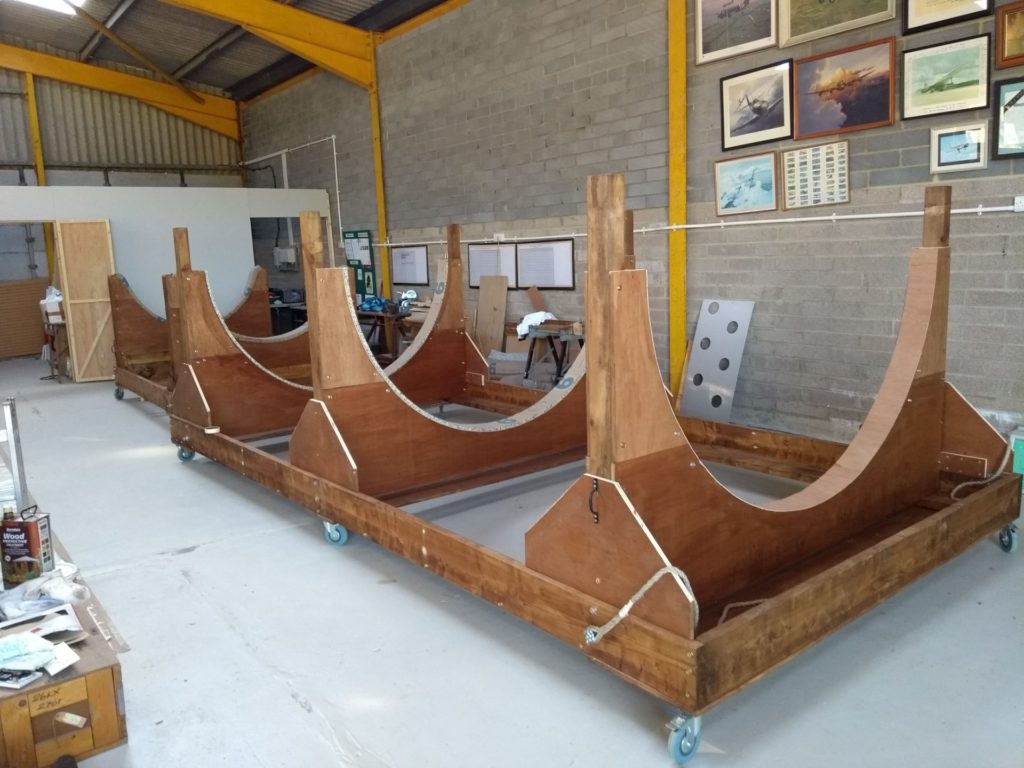
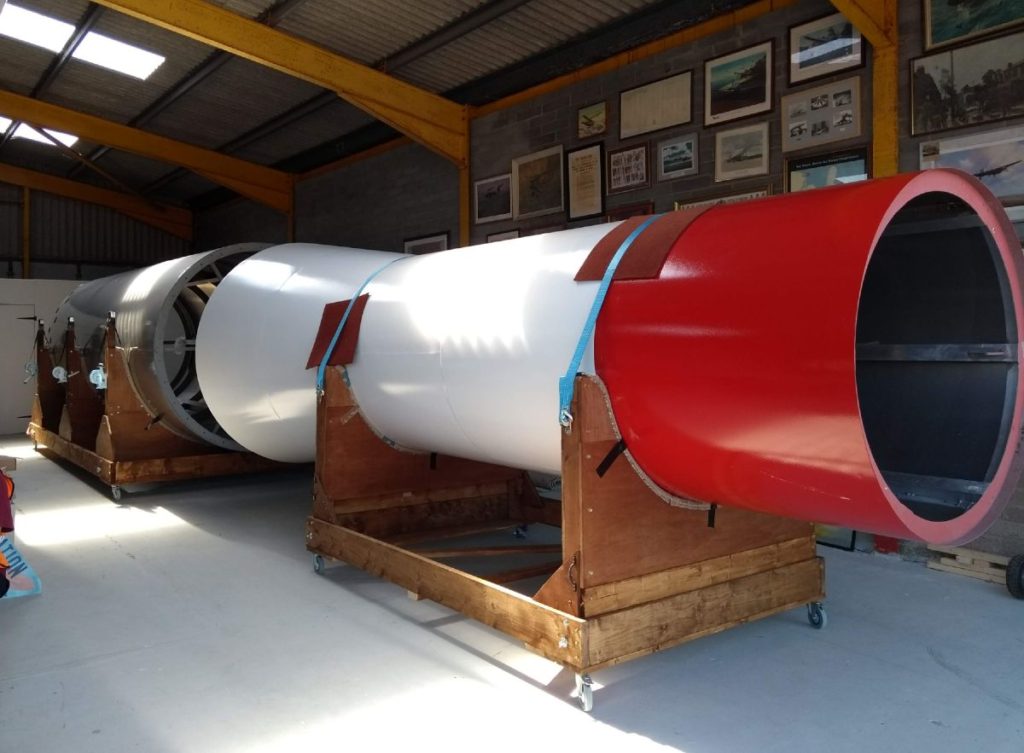
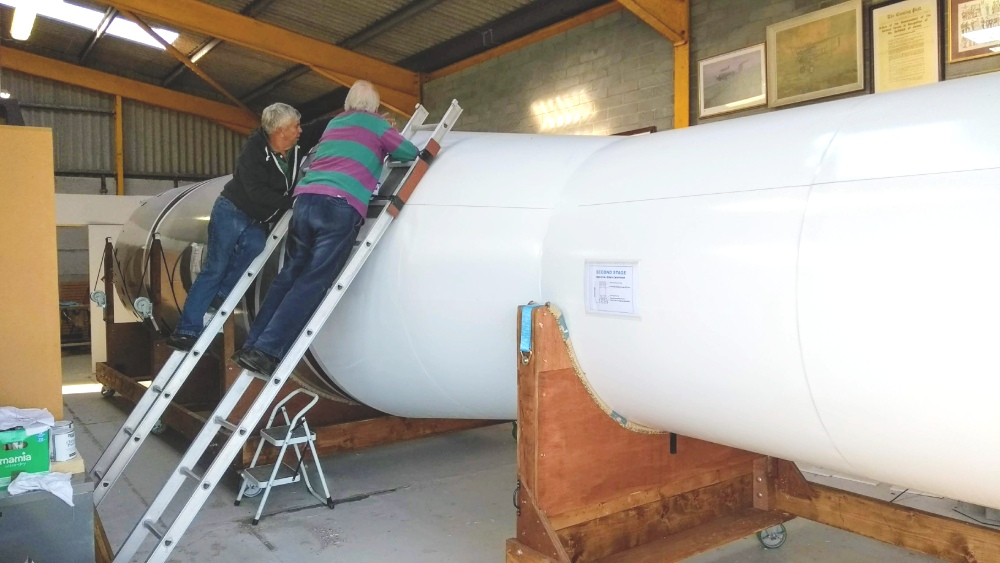
The distinctive stripes and line markings on the original Black Arrow rockets were recreated and in printed vinyl’s and applied by Chris Bloomfiled of Instinct signs.
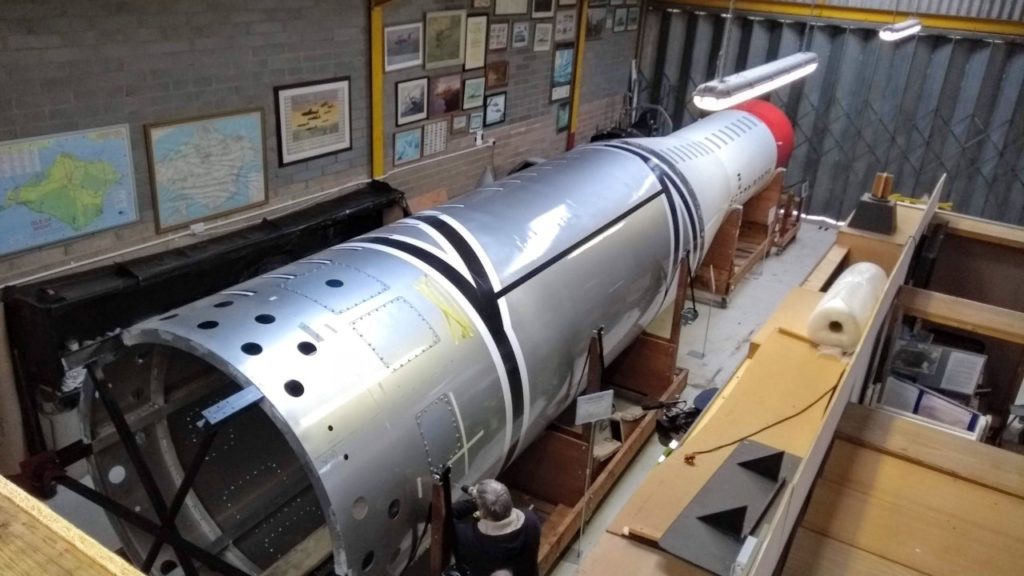
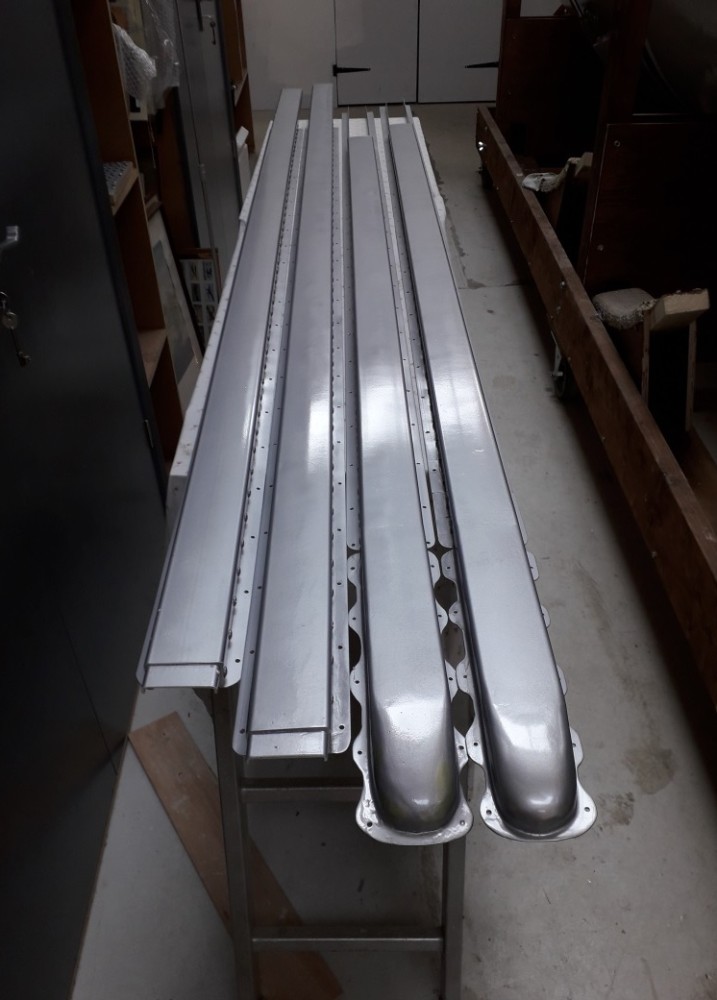
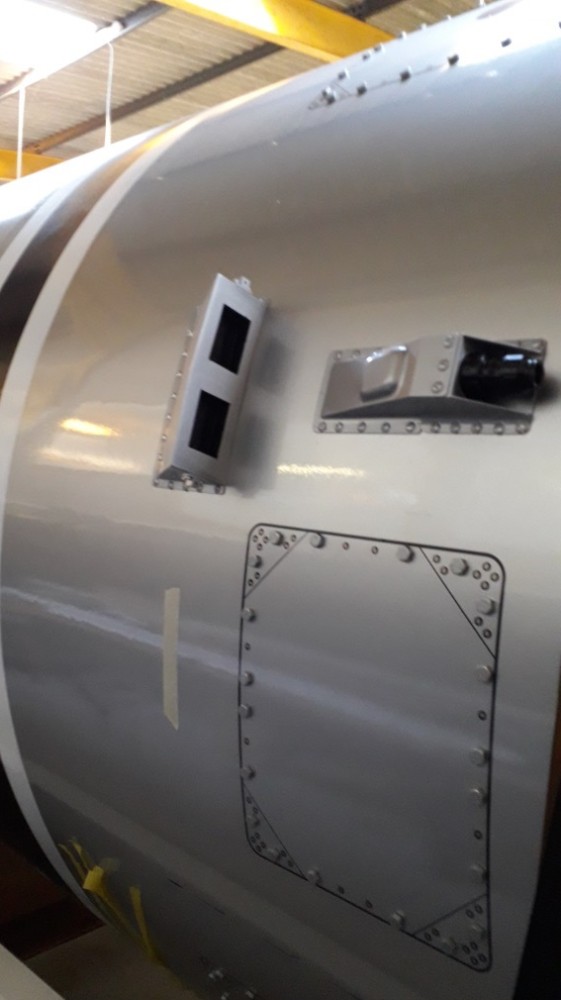
The various details fitted to outside of the rocket body to recreating those found on the original rocket such as the power cable ducting, the external fuel pipes and the fuel line and power connectors.
Tony used his ingenuity to create many of these using off the shelf materials, with additional help from Cowes Enterprise college who made the end sections of the cable ducting using Vacuum Molding and museum volunteer Greg, who made the fuel line connector; shown top-right above.
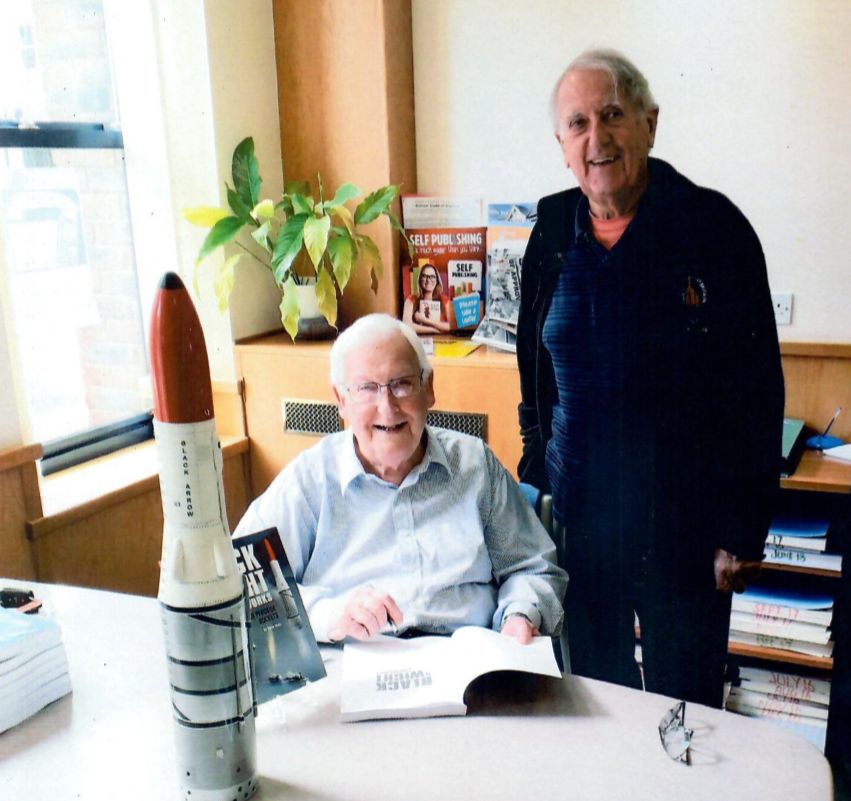
Derek Mack ( shown seated with Tony) worked as a systems engineer on both the Black Knight and Black Arrow rockets on the Isle of Wight and at the Woomera rocket range in Australia, up until the program was cancelled in 1971.
Derek has been a great help on the project helping to provide various information in a range of areas; from key dimensions of the rocket and nose cone, too helping Tony on re-creating the rocket livery and details.
Derek has written an excellent account of his time working in the space program and his book includes lots of information on how the rockets worked and the trials and tribulations of being a rocket engineer at the cutting edge of the UK space program in the 1950’s and 60’s.
His book “Black and Wight Fireworks” is available from all good stockist.
Skyrora Ltd
Additional information was also provided by Skyrora Ltd, a new rocket company based in Scotland, who were able to take dimensions off the original rocket on key details.
Skyrora are developing a new generation of rockets powered by Hydrogen Peroxide, the same fuel used in the Black Arrow rockets.
As part of there outreach work Skyrora have brought the original 1st stages of both the Black Arrow R2 and R3 back to the UK which we hope to display in future.
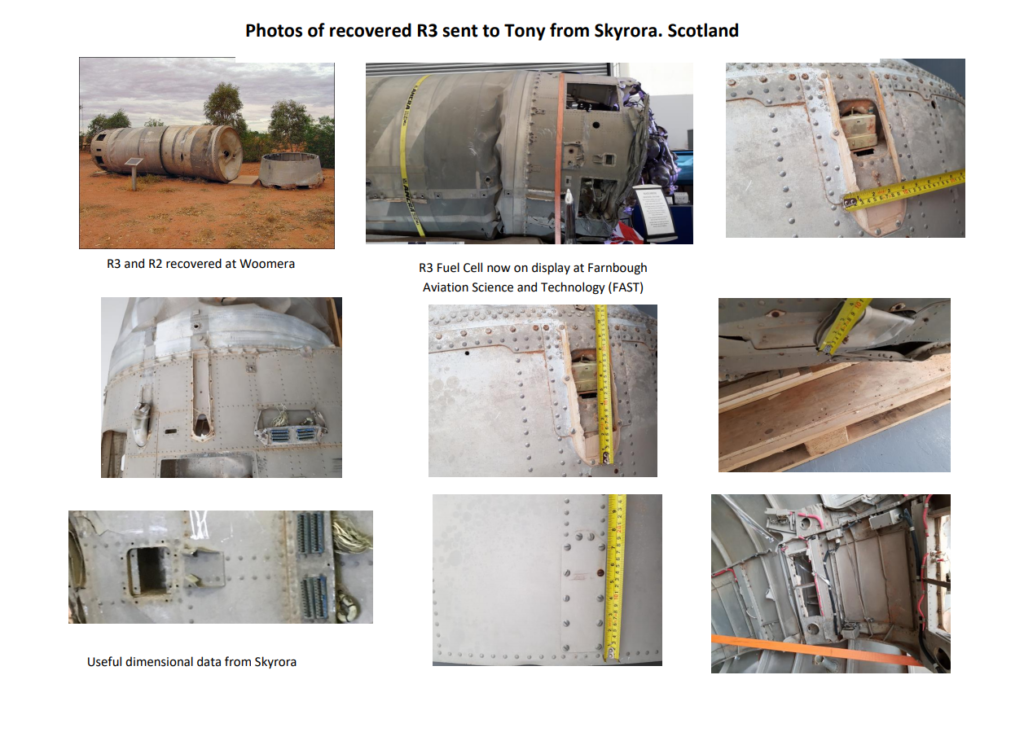
The Launch Pad..
Sandown Airport Ltd
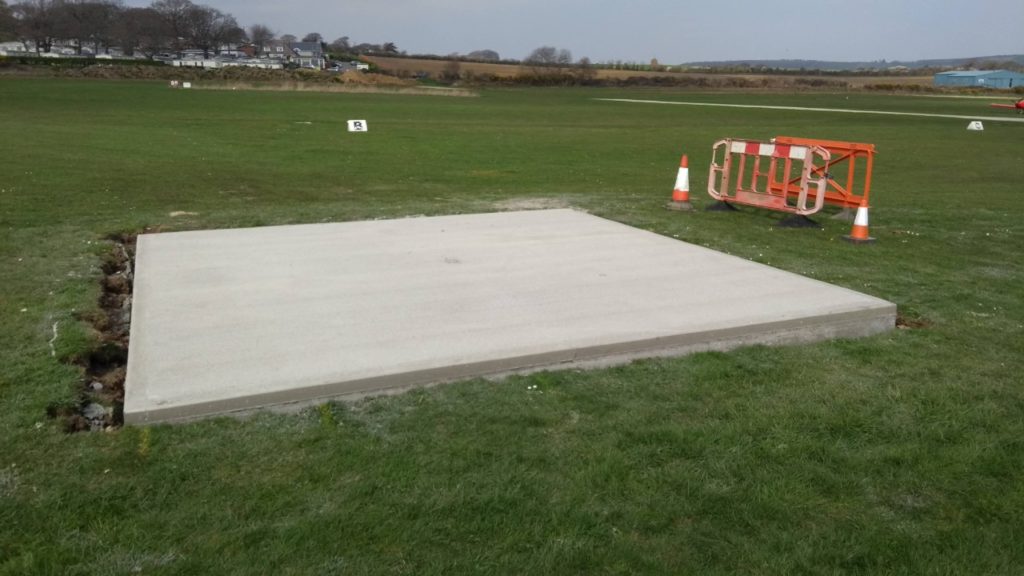
The concrete base has been very kindly supplied by Sandown Airport who are also providing display space for the replica Black Arrow at the airfield.
Raising the Rocket..
Tony designed the replica to sit on a hinged base plate, this allows the rocket to be raised from a horizontal position to a vertical position using a cable winch.
The cable runs over the top of an A-frame to give the necessary leverage. An additional cable is attached to the lower side of the replica to help control its movement as it’s raised.
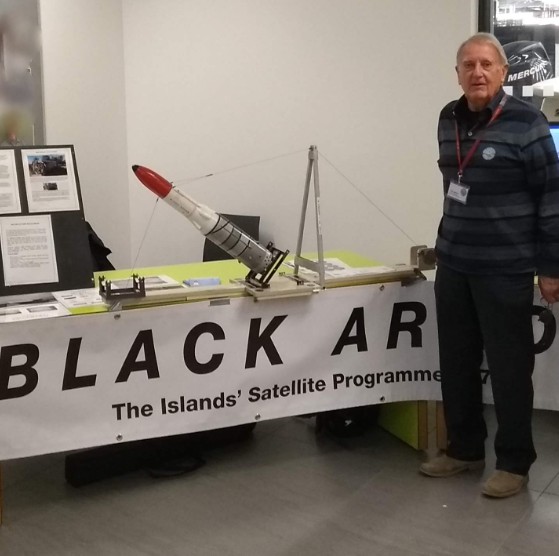
Volunteers Colin and Pete prime and paint the base frame which the replica sits on. This is hinged at one end allowing the structure to be raised.
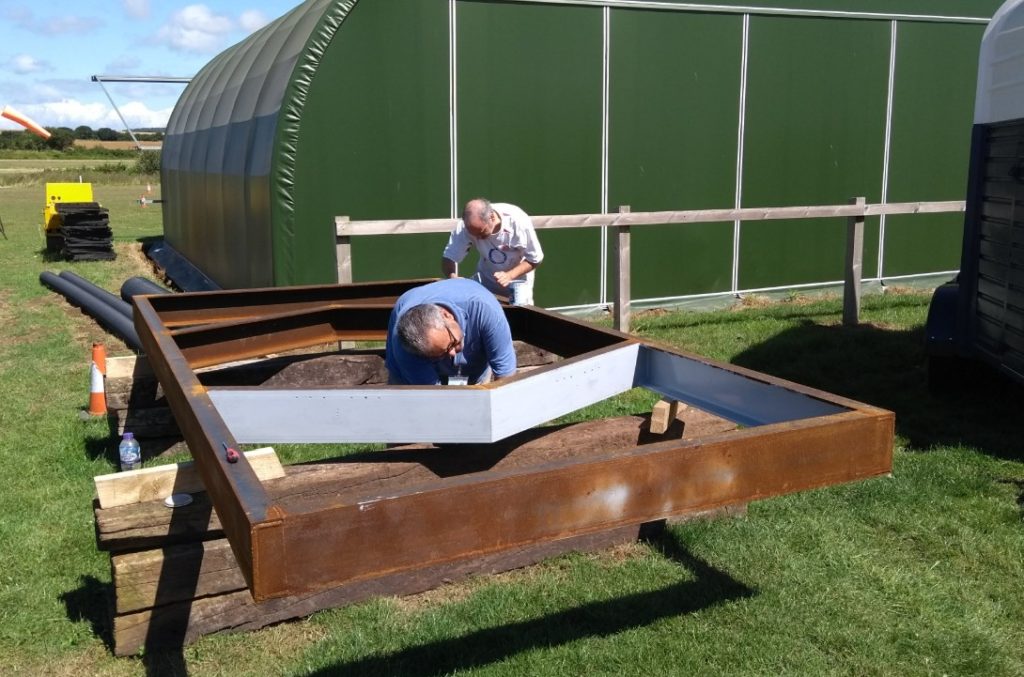
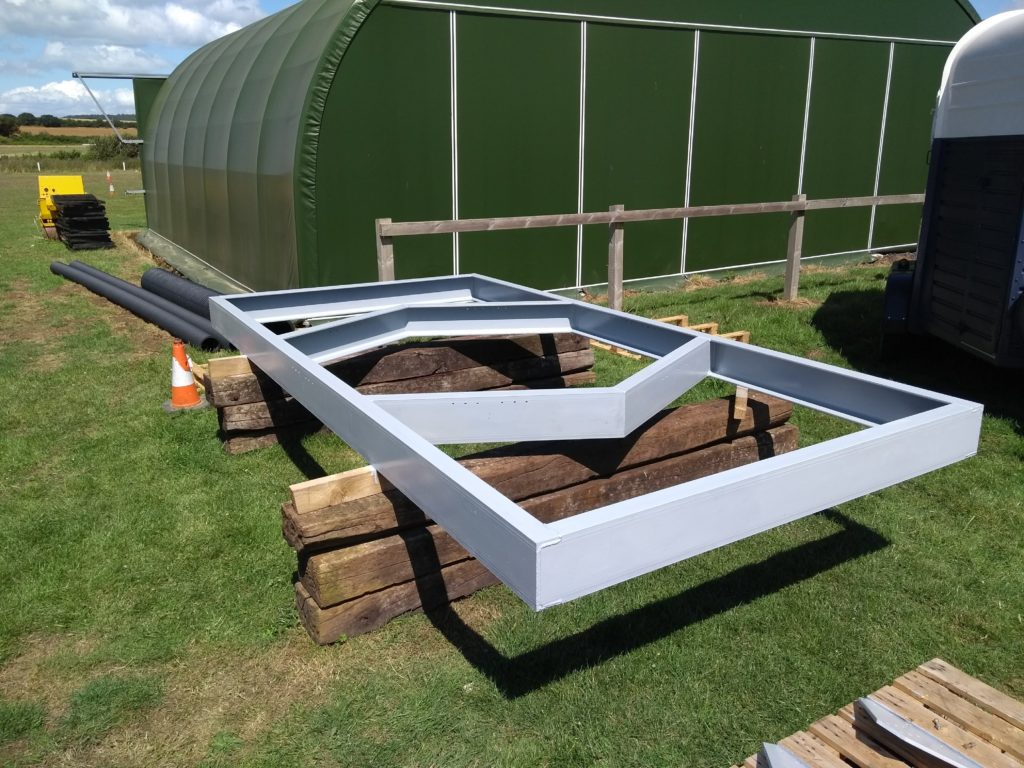
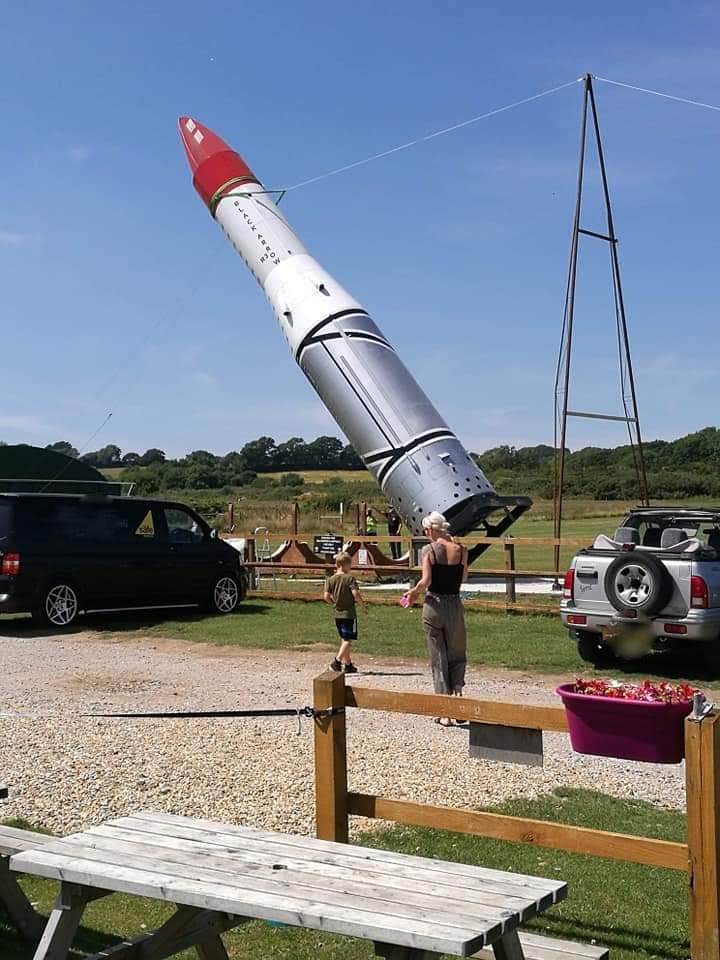
Black Arrow R3 replica info..
- The replica stands just over 13m ( 40 feet ) in height, when displayed vertically. This will be the only vertically displayed Black Arrow in the UK.
- The replica weighs approximately 500kg.
- The rocket livery matches the R3 which was the final rocket to be launched in 1971, just days after the program was officially cancelled.